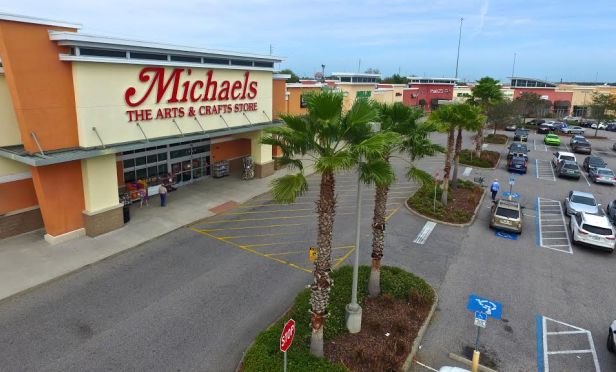
ORLANDO—Some asset types seem to perform better than others in secondary and tertiary markets. Time Equities is actively acquiring retail properties, suburban office spaces and select industrial assets. Francis Greenburger, CEO and founder of Time Equities, tells GlobeSt.com properties that present long-term potential and strong cash flow fundamentals are often most attractive as investment opportunities.
“We have a well-occupied regional mall in Utah under contract for $70 million at a 9.5%-plus in-place cap rate,” he says. “We are also buying a 50% occupied suburban A-quality office building for $60 per square foot in New Jersey at 8.5%-plus cap rate on existing occupancy.”
Andrew Nelson, chief economist at Colliers International, suggests investors seeking upside target assets with a diverse tenant base to protect against sector-specific downturns, assets with near-term lease rollovers and those with upgraded tenant amenities. That's whether they are in gateway markets or 18-hour cities.
Drilling down into specifics, multifamily has clearly outperformed office, industrial and retail assets in this cycle and in core and non-core markets in terms of volume. Portfolio and entity-level plays earlier this year, such as Starwood Capital Group acquiring Equity Residential's suburban portfolio, Starwood Capital and Milestone Apartment REIT acquiring Landmark Apartment Trust and Harrison Street acquiring Campus Crest, have buoyed multifamily in non-core markets.
“The drop-off in the office, industrial and retail sectors was really related to the fact that there weren't many, if any, portfolio deals so far this year,” Steve Pumper, executive managing partner of Transwestern's Capital Markets and Asset Strategies Group, tells GlobeSt.com. “We've also seen drop-off in sales volumes in New York, Washington, DC and San Francisco because investors are taking a pause to determine where we are in the cycle given that cap rates in those markets are at historical lows. These investors are trying to decide where to deploy their capital to maximize returns, and that's driving flight to secondary or tertiary markets.”
Marc Suarez, senior vice president at Hunt Mortgage Group, tells GlobeSt.com a lot of the decision making on projects in tertiary markets has to do with the operator. His firm looks at networth and liquidity. “People work and live there and raise their families there,” Suarez says. “We're going to follow our borrowers to these markets. We'll get aggressive in the right secondary and tertiary markets.”

ORLANDO—Some asset types seem to perform better than others in secondary and tertiary markets. Time Equities is actively acquiring retail properties, suburban office spaces and select industrial assets. Francis Greenburger, CEO and founder of Time Equities, tells GlobeSt.com properties that present long-term potential and strong cash flow fundamentals are often most attractive as investment opportunities.
“We have a well-occupied regional mall in Utah under contract for $70 million at a 9.5%-plus in-place cap rate,” he says. “We are also buying a 50% occupied suburban A-quality office building for $60 per square foot in New Jersey at 8.5%-plus cap rate on existing occupancy.”
Andrew Nelson, chief economist at Colliers International, suggests investors seeking upside target assets with a diverse tenant base to protect against sector-specific downturns, assets with near-term lease rollovers and those with upgraded tenant amenities. That's whether they are in gateway markets or 18-hour cities.
Drilling down into specifics, multifamily has clearly outperformed office, industrial and retail assets in this cycle and in core and non-core markets in terms of volume. Portfolio and entity-level plays earlier this year, such as Starwood Capital Group acquiring
“The drop-off in the office, industrial and retail sectors was really related to the fact that there weren't many, if any, portfolio deals so far this year,” Steve Pumper, executive managing partner of Transwestern's Capital Markets and Asset Strategies Group, tells GlobeSt.com. “We've also seen drop-off in sales volumes in
Marc Suarez, senior vice president at Hunt Mortgage Group, tells GlobeSt.com a lot of the decision making on projects in tertiary markets has to do with the operator. His firm looks at networth and liquidity. “People work and live there and raise their families there,” Suarez says. “We're going to follow our borrowers to these markets. We'll get aggressive in the right secondary and tertiary markets.”
Want to continue reading?
Become a Free ALM Digital Reader.
Once you are an ALM Digital Member, you’ll receive:
- Breaking commercial real estate news and analysis, on-site and via our newsletters and custom alerts
- Educational webcasts, white papers, and ebooks from industry thought leaders
- Critical coverage of the property casualty insurance and financial advisory markets on our other ALM sites, PropertyCasualty360 and ThinkAdvisor
Already have an account? Sign In Now
*May exclude premium content© 2025 ALM Global, LLC, All Rights Reserved. Request academic re-use from www.copyright.com. All other uses, submit a request to [email protected]. For more information visit Asset & Logo Licensing.








